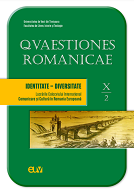Il rilievo della diversità degli stili di apprendimento nella didattica delle lingue straniere: realtà o “neuromito”
The Importance of Learning Styles Diversity in Foreign Language Teaching: Reality or "Neuromyth"
Author(s): Silvia Madincea PașcuSubject(s): Education, Foreign languages learning, Language acquisition, Sociology of Education, Pedagogy
Published by: Universitatea de Vest din Timişoara
Keywords: diversity; learning style; Neuromyth; teaching;
Summary/Abstract: In the acquisition process of foreign languages, each learner (child or adult) prefers a certain way of studying and learning which indicates one’s way of perceiving, interacting and responding to the stimuli used in class. Starting from the learning styles according to different traditional classifications (Dun & Dun: 1978, Grecorc: 1982; Kolb: 1984; Honey & Mumford: 1997, Sprenger: 2008 etc.), but also according to the various criticisms aimed at them (Dekker, Lee, Howard-Jones, Joles: 2012; Newton, Salvi: 2020), this paper highlights a number of teaching activities favourable to different styles for the involvement of each participant in a foreign language course. From 2012 onwards, learning styles are often referred to as "Neuromyths" as a student is unable to better acquire if taught in his or her preferred style. Reality or "Neuromyth", a single learning style should not prevail in a language class while the teacher should not be influenced by his own style of acquisition but stimulate different skills in students (listening, writing, speaking, etc.).
Journal: Quaestiones Romanicae
- Issue Year: X/2023
- Issue No: 2
- Page Range: 313-322
- Page Count: 10
- Language: Italian

